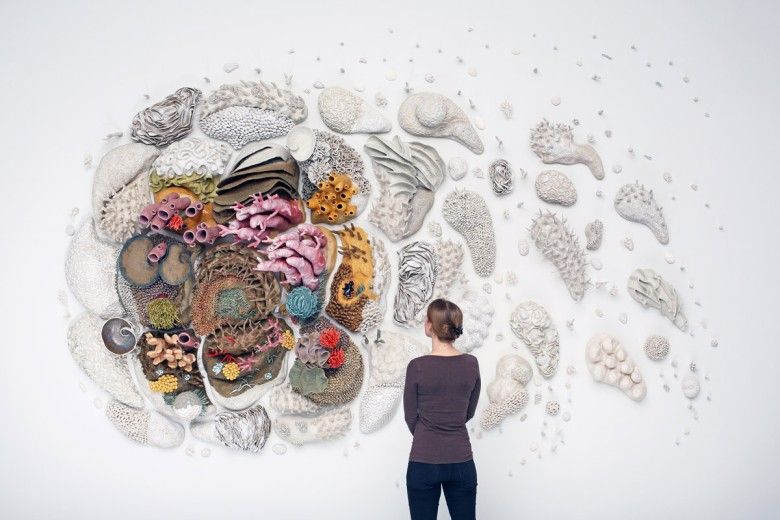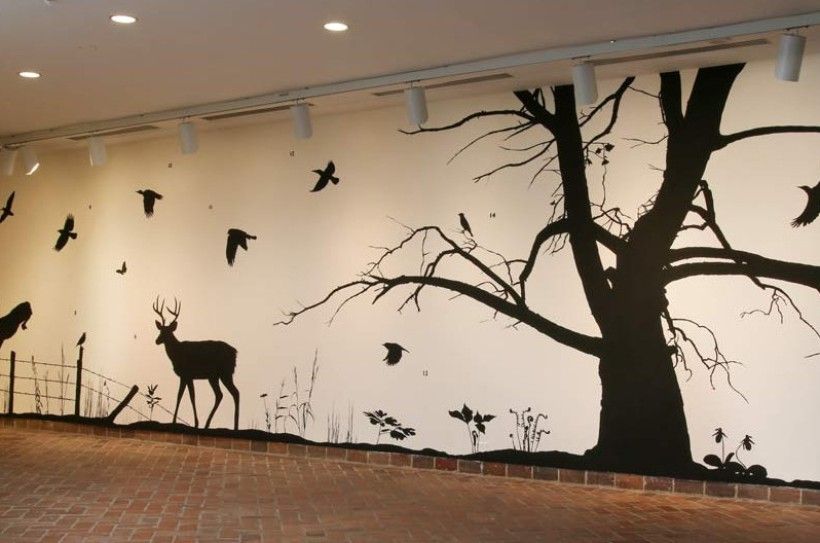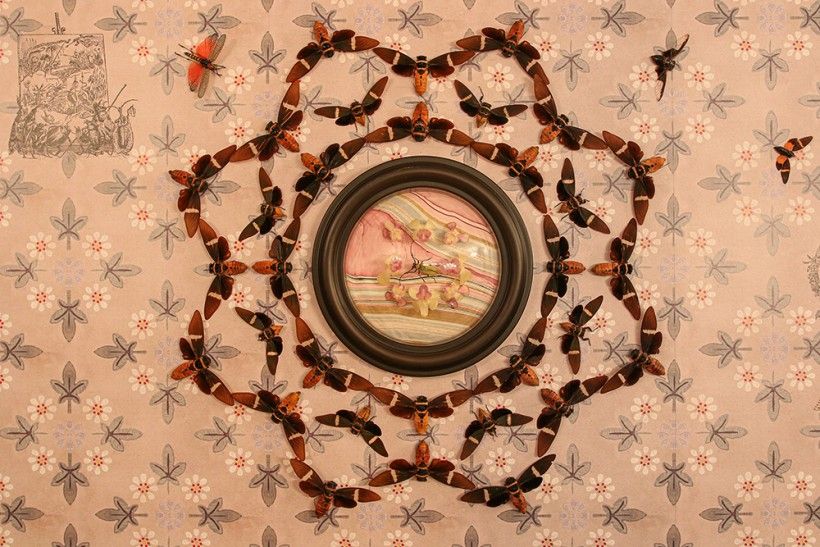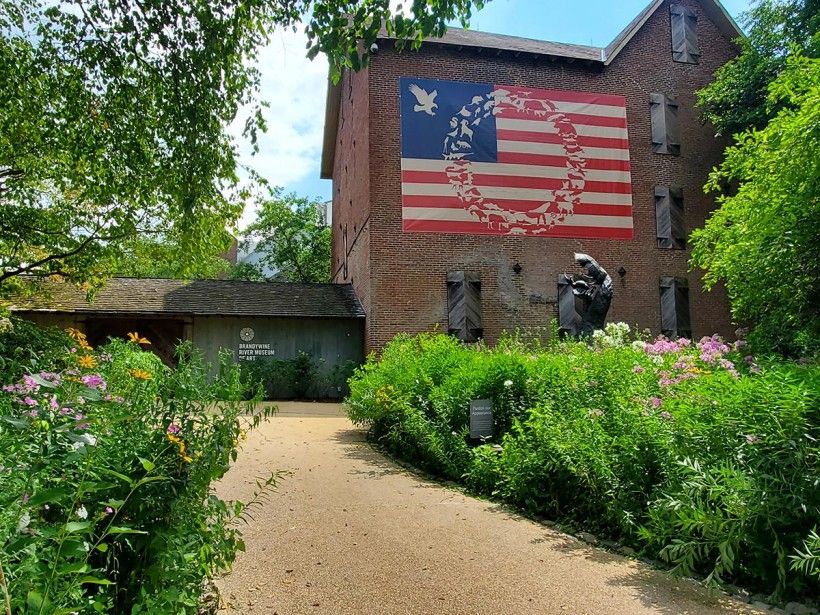Curator Chat: "Fragile Earth: The Naturalist Impulse in Contemporary Art"

Now on view at the Brandywine through January 8, 2023, Fragile Earth: The Naturalist Impulse in Contemporary Art features two galleries of striking works reflecting on the vulnerability of the environment by four leading contemporary artists—Jennifer Angus, Mark Dion, Courtney Mattison and James Prosek—whose work engages with environmental themes.
Organized by the Florence Griswold Museum (FloGris) in Old Lyme, Connecticut, Fragile Earth builds on the success of the Brandywine’s 2018 exhibition, Natural Wonders: The Sublime in Contemporary Art, which brought together the work of 13 contemporary artists who likewise investigated humanity’s relationship with the environment.
In the following interview, the exhibition’s curator, Jennifer Stettler Parsons, Ph.D., discusses the original inspiration behind Fragile Earth and its planning—which debuted at the FloGris in 2019. Brandywine’s Senior Curator, Amanda C. Burdan, worked with Parsons and Fragile Earth’s four artists to update the exhibition by incorporating works made in the interim. Over 40% of the works on view are new to this iteration of the exhibition. The Brandywine’s presentation of Fragile Earth also includes a site-specific installation by Angus and a commissioned mural by Prosek that explores the plants and animals native to the Brandywine Valley.
What’s the meaning behind “the Naturalist Impulse” in the subtitle of the exhibition?
The concept places these contemporary artists within the legacy of the historic artist-naturalist. A naturalist is an expert or student of the environment. The “naturalist impulse” is a desire to study and record nature’s flora and fauna. Building upon historical precedents, there has been a tradition of artist-naturalists from the time the United States was founded. My 2017 exhibition at the FloGris, called Flora/Fauna: The Naturalist Impulse in American Art, examined how artist-naturalists joined surveyors and acted as cataloguers and collectors of specimens and early environmentalists. Fragile Earth shows the continuation of that tradition by contemporary artists responding to the current environmental crisis.
How did you select the featured artists?
They were selected for the ways in which their practices exemplify the continuation of the historic artist-naturalist and how their unique creations convey a profound message about the impact of human intervention on the environment. I also considered how their interests and work related to each other when combined to encompass nature on land, in the air and in the sea.

An exciting component of the exhibition here at the Brandywine is also the site-specific work by artist James Prosek. How did that process develop and unfold at the Florence Griswold Museum?
Each artist visited the FloGris to learn about our history and collection and to be inspired to create something new. Jennifer Angus and Mark Dion were both keenly interested in "cabinets of curiosity" and decided to create new cabinets partially modeled on the historic example in our collection assembled by Impressionist Willard Metcalf. James Prosek followed in the footsteps of Lyme Art Colony founder Henry Ward Ranger by creating a mural that included the famous old Barbizon Oak near our site, which Ranger also painted around 1900. There are many parallels between the FloGris and the Brandywine—both are places where nature inspired art and continues to do so.
In advance of beginning his commissioned work for the Brandywine, Prosek also visited Chadds Ford for inspiration. Senior Curator Amanda C. Burdan brought him to the sycamore tree that was immortalized by Andrew Wyeth in paintings like Pennsylvania Landscape (1941). Prosek’s mural centers on that sycamore and includes local animals like white-tailed deer and meadowlark. He also studied the plants in the area and has included native grasses like Big Bluestem and Little Bluestem in the mural.
Were there any unexpected discoveries for you when the exhibition was installed at the Florence Griswold Museum?
The commissions were all surprising, because as much as you can imagine what they will look like from sketches, nothing can replace the experience of encountering art in person—especially when they are as unique and immersive as these works—from the scale of them to the unusual materials. You never forget the emotion of standing before one of Courtney Mattison’s monumental coral sculptures, or seeing how Mark Dion elevates marine debris into conceptual fine art, how James Prosek creates awe-inspiring silhouette environments, and how Jennifer Angus tells a story using real (gasp!) insect specimens.

How has the exhibition at the Brandywine changed since it was first presented at the Florence Griswold Museum in 2019?
The exhibition at the Brandywine includes some new works created by each of the artists within the past two years. Angus developed a completely new installation concept for the Strawbridge Family Gallery, entitled Wistful Wild, which repositions some of the pieces that were installed in Connecticut into fresh configurations. She adapted a wallpaper design from Andrew Wyeth’s studio to pay homage to the institution’s history and sense of place. Onto the reproduction of Wyeth’s wallpaper, she inserted her signature “insect wallpaper,” made of real insect specimens pinned in ornamental designs. There are also illustrations of anthropomorphic insects which allude to N. C. Wyeth’s career as an illustrator, and nods at Angus's own role as a published novelist with a hand in the worlds of both art and literature.

In addition to his mural, Prosek’s monumental flag piece, Invisible Boundaries (2021), is on view—which adds native animals to that iconic U.S. symbol. A large-scale variation of this work temporarily graced the façade of the Museum earlier on in the exhibition's run—which was Prosek’s largest outdoor installation to date. Prosek also went fishing in a stream running through the Brandywine Conservancy’s Laurels Preserve and caught a red-breasted sunfish, which he painted and has included in the show.
Dion created some new works for his section of the exhibition, such as a sculpture called Still Life in Black in White (2022), which alludes to the threat that oil spills pose to penguins. Mattison’s section incorporates several pieces that are different for this presentation, from her flagship Our Changing Seas III (2014)—an honor to show!—to newer works like Surface Tension-II (2020) and the beautiful, swirling Gyre I (2022). They are all powerful and stunning additions.
Header Image:
Artist Courtney Mattison standing in front of her work, Our Changing Seas III, 2014. Glazed stoneware and porcelain, 108 x 156 x 24 in. Courtesy of the artist, Photograph by Arthur Evans for the Tang Museum